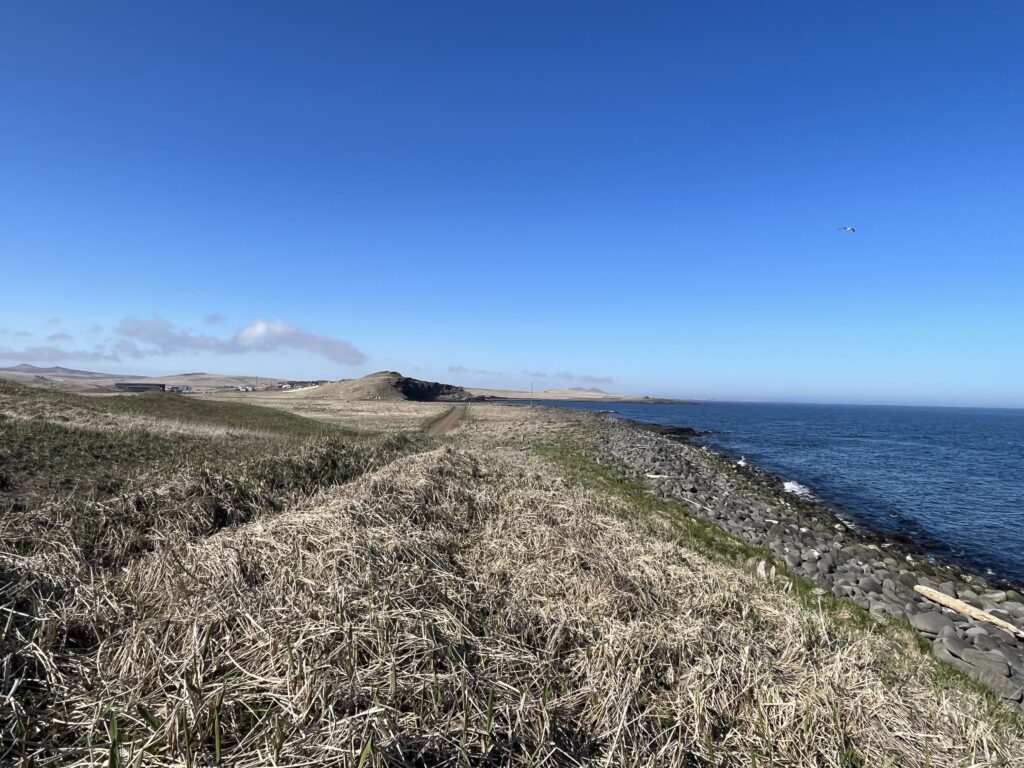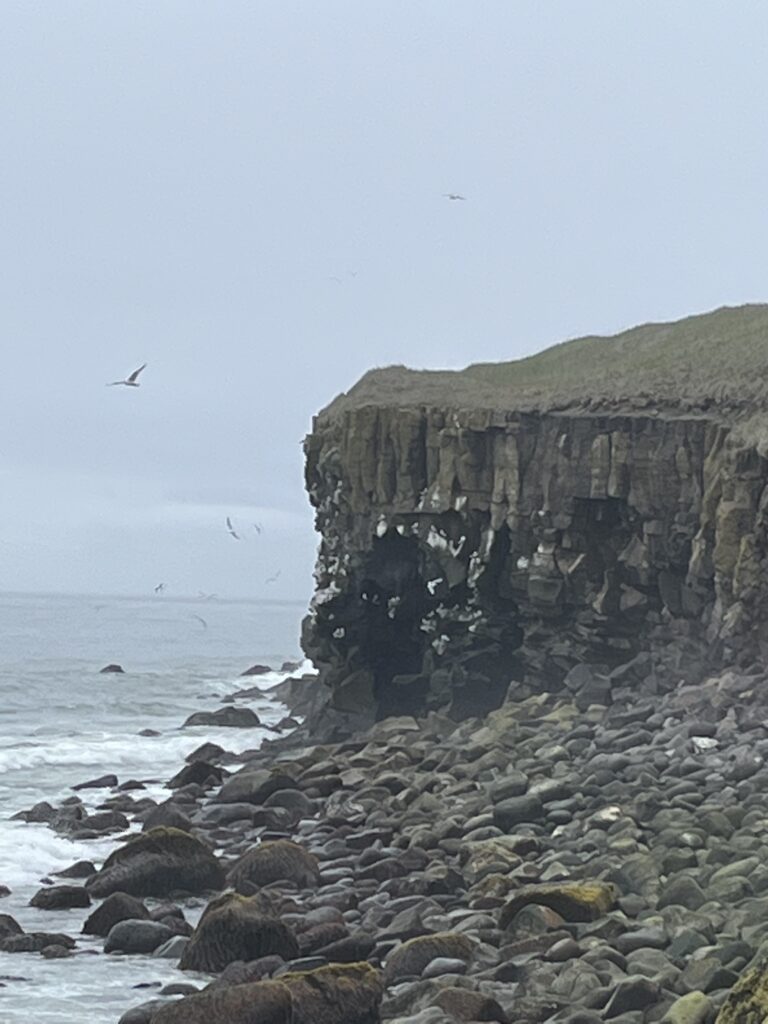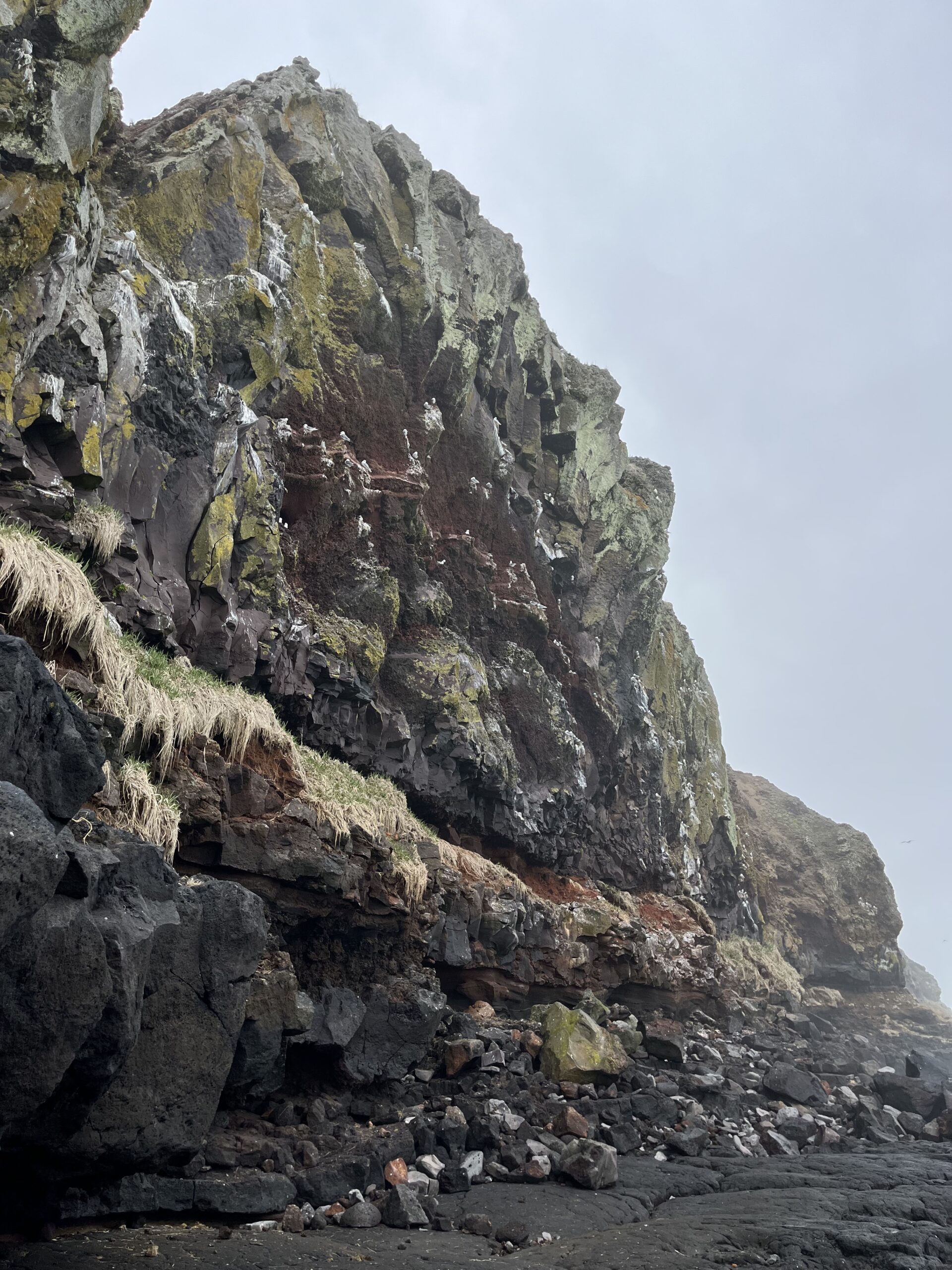This past weekend was the project’s first trip to St. Paul Island to assess areas for capturing Black-legged Kittiwake and Thick-billed Murre to deploy geolocator tags later this summer.
Kristen Gorman (project co-investigator) met with Alaska Maritime National Wildlife Refuge’s (AMNWR) team to better understand the Refuge’s long-term seabird monitoring program and identify some colonies that might be suitable for bird capture.

Landing on St. Paul Island in sunshine!
What makes a good seabird colony for a geolocator study? Good question! This is not a trivial matter because many seabirds nest in areas that are extremely difficult reach for bird capture. For example, some kittiwake nest very high on cliff edges, or above areas with little to no beach access (see photo). Seabird capture also needs to be coordinated with the Refuge’s long-term monitoring study to make sure there is no overlap in birds studied. It is important not to capture or disturb birds in any long-term monitoring plots in order to preserve the integrity of the data that are collected on survival, abundance, and productivity.
The team found that kittiwakes were actively establishing nesting sites, while the murres were still spending time at sea away from the breeding colony. They also identified a potentially great colony that could be perfect for getting started on the Black-legged Kittiwake captures in July.
 A potential kittiwake study colony
A potential kittiwake study colony
Kristen, and Heather Renner and Matt Rustand (AMNWR) shared information about upcoming seabird research and monitoring projects with the community at an event held at the Bering Sea campus. It was exciting to learn more about other seabird and land-bird work taking place on St. Paul this season.
Stay tuned for more updates in July when we return to St. Paul Island to get started on our fieldwork.
Kristen Gorman

